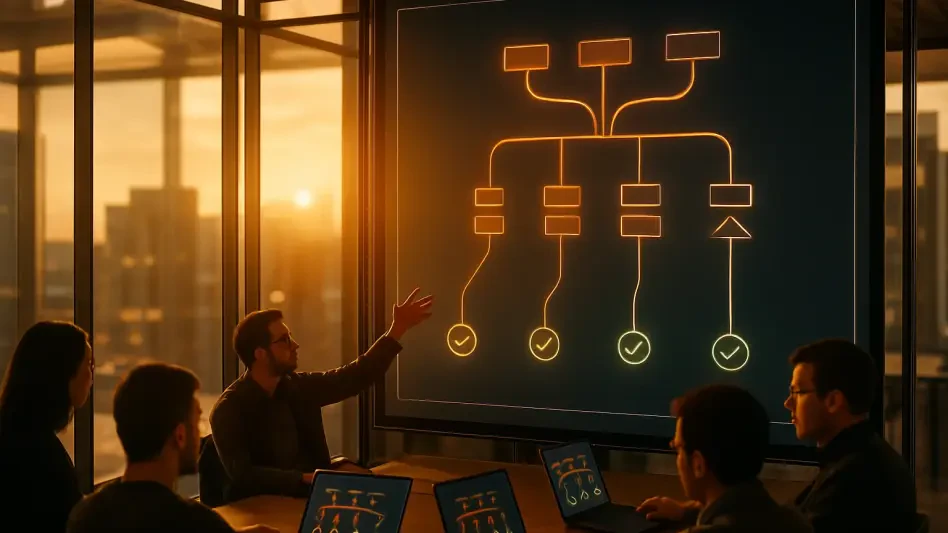In today’s rapidly evolving industrial landscape, the convergence of Information Technology (IT) and Operational Technology (OT) networks is no longer just a buzzword but a critical phase altering how industries protect themselves against cyber threats. This inevitable integration has ushered in a new era of challenges and opportunities as industries strive to harmonize their cybersecurity strategies. With growing connectivity between IT and OT systems, organizations are now tasked with safeguarding more intricate networks while facing expanding attack surfaces that demand resilience and agility.
Understanding IT-OT Convergence
IT-OT convergence refers to the integration of IT systems, traditionally used for data-centric computing tasks, with OT systems that control physical processes and machinery. This merging holds transformative potential for industries like manufacturing, energy, and transport, enabling efficiencies and innovations but also amplifying security concerns. Sectors most affected by this shift include critical infrastructure, where legacy systems are now linked with advanced technologies like IoT, analytics, and smart devices, requiring significant security enhancements. Major players, including Siemens and Schneider Electric, are spearheading developments in this arena, while regulatory frameworks such as the NERC CIP standards are continuously shaping industry norms through rules emphasizing security and compliance.
Analyzing Current Trends in IT-OT Cybersecurity
Emerging Challenges and Solutions
Industries are grappling with rapidly changing cyber threats that exploit the vulnerabilities inherent in IT-OT integrations. As technological advancements continue to blur the lines between IT and OT, cybersecurity professionals are adopting innovative solutions, such as zero-trust architectures and AI-driven monitoring, to keep pace. Enhanced consumer awareness and expectations for robust security systems are pushing organizations to be more transparent about their cybersecurity measures.
Market Data and Future Outlook
Market analysis indicates a substantial increase in investments toward advanced cybersecurity measures, as companies prioritize safeguarding their integrated systems. Current performance metrics reveal that industries are investing heavily in proactive measures such as threat intelligence and real-time monitoring. Forecasts suggest continued growth in this sector, with data-driven insights highlighting emerging areas for strategic expansion and adapting to shifting threat landscapes.
Overcoming IT-OT Convergence Challenges
Organizations face formidable hurdles such as ensuring the interoperability of diverse systems, managing heightened attack vectors, and addressing vulnerabilities unique to the convergence of IT and OT. To combat these, comprehensive strategies including robust vulnerability management protocols and cross-platform security measures are crucial. Adopting an integrated approach to risk assessment and deployment of security frameworks tailored to both IT and OT environments is essential in minimizing these risks.
Navigating the Regulatory Environment
The regulatory landscape is meticulously evolving to address the complex challenges posed by IT-OT cybersecurity. Key regulations such as the EU’s NIS Directive and the U.S. Cybersecurity Framework create boundaries that industries must navigate carefully, mandating compliance to protect against potential breaches. Organizations emphasize regulatory adherence, ensuring operations align with legal imperatives while maintaining effective security postures.
Future Directions in IT-OT Cybersecurity
Anticipated technological advancements hold the potential to either bolster or disrupt current cybersecurity practices. As automation and AI increase their footprint within cybersecurity solutions, organizations must anticipate shifts that may redefine security paradigms. Evolving consumer preferences are set to reshape cybersecurity strategies, demanding innovative and adaptive approaches. Additionally, innovations, possible regulatory shifts, and economic developments are poised to influence the strategic direction of cybersecurity in converged IT-OT environments.
Conclusion and Strategic Recommendations
The analysis reveals that convergence between IT and OT systems is reshaping cybersecurity strategies, necessitating a holistic approach to prepare for new threats. Moving forward, organizations should consider investing in adaptive cyber solutions that integrate seamlessly across both domains, supporting both current needs and future growth. A focus on fostering cross-functional collaboration, enhancing team communications, and encouraging continuous learning within cybersecurity teams will better equip organizations to handle IT-OT challenges. Furthermore, embracing automation and AI will augment human capabilities in identifying and addressing threats efficiently. As the industry continues to evolve, maintaining a proactive, innovative, and collaborative approach will be crucial in fortifying defenses against emerging cyber threats.








